à la The French Laundry and Bouchon
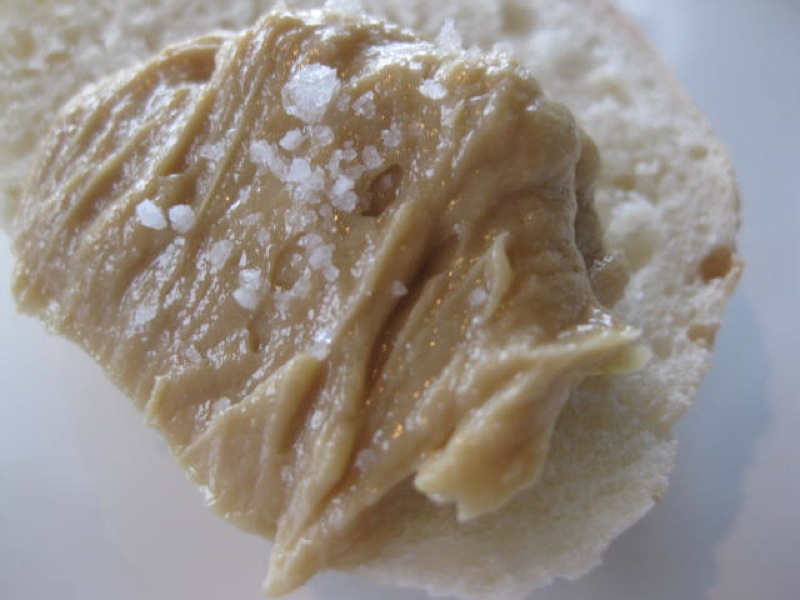 Does that make your mouth water? It wouldn’t have even phased me before going to The French Laundry last August. But now, I know what I am looking at. I have tasted it, and I am head over heals nuts over it. And the sea salt makes a huge difference. It breathes life into the foie gras and the richness of it is almost indescribable. I made the foie gras au torchon as finished in the photo below. I am very proud of myself, though it is apparent that I didn’t mold the lobe tightly enough together, as you see the cracks in the slice, it was still absolutely reminiscent of what we had last August at The French Laundry. I really surprised myself! And, if I can do it, so can you!
Does that make your mouth water? It wouldn’t have even phased me before going to The French Laundry last August. But now, I know what I am looking at. I have tasted it, and I am head over heals nuts over it. And the sea salt makes a huge difference. It breathes life into the foie gras and the richness of it is almost indescribable. I made the foie gras au torchon as finished in the photo below. I am very proud of myself, though it is apparent that I didn’t mold the lobe tightly enough together, as you see the cracks in the slice, it was still absolutely reminiscent of what we had last August at The French Laundry. I really surprised myself! And, if I can do it, so can you!
My first foie gras experience I cannot even recall. It was from a can, for sure, and was not good. Actually, it was repugnant. Then I went to France, and bought some more from a can. It was also repugnant. The next time it was seared somewhere, and really very grey looking. It was terrible. That was the end of me understanding the allure of foie gras. Rather, the end of me trying to understand the allure …until Vanja’s Foie Gras au Torchon arrived for course three at The French Laundry. Honestly, I didn’t even know what it was when I tasted it. I was served an abstract looking Heart of Palm salad that was flat, and tasteless. He was oohing and ahhing over the patéon his toast. So, I tasted it. I was in love. Immediately. What is that? Oh my gracious goodness, this is the most unfamiliar flavourful bit of heaven I have ever had rest itself upon my tongue. What is it? I went back to the menu: Foie Gras au Torchon ($30 Us dollars extra for this option on top of the already embarrassingly high price for the meal). Woops! I don’t think we meant to order this. But we had asked for one of everything, and there were only two choices of everything on the menu… so what a happy, happy accident. I had to learn to make this. Another quest.
The brioche was the best brioche I have ever had, I should add. I am not a connoisseur of brioche, either, though. I just know what I like and what tastes good and I also know I have an exceptional palate. See how pink and lovely it was at The French Laundry in the photo directly above? I think that may be the red salt. Very different than my opening photo. That is not the foie gras au torchon. That is the foie gras patéthat is served at Bouchon and in the Bouchon cookbook. It is made into au Torchon first, though… as I have done here.
Day One: Soaking
I bought the lobe at The Cookbook Company Cooks in Calgary, but now you can buy a whole lobe at Sandy Lane Meats & Deli in the west end (780-481-3972 and call ahead). I didn’t know that at the time. Mine was frozen, and I brought it home and lovingly thawed it. I was just excited to see a whole one “in real life”! I called and found out that mine came from the Hudson Valley Foie Gras Company and that it actually was Grade A!
Beavie is tenderly warming it to room temperature while I fill the bowl with milk. I then covered it completely with milk and sealed the container with plastic wrap, replacing the lob in the refrigerator for 24 hours.
Day Two: Cleaning and Marinating
I “get to” devein it! First, I rinsed the milk off of it, patted it dry, and let it sit for 45 minutes to come to room temperature.
I read a lot and watched some youtube videos before attempting the deveining, but it really is exactly as Chef Keller writes in The French Laundry cookbook: “I tell people to think of foie gras as Play Doh. When you’re cleaning it, don’t be afraid you’re going to make a mistake because you can always put it back together…you mold it back together again.” Now there are two parts to a whole lobe: a large portion, and a small portion (or a large lobe and a small lobe). I started with the large lobe, keeping the small lobe covered with the damp cloth. I was really amazed at how I turned the large lobe to face me as I had read to do, with the tail of the “y” facing me, and then I carefully prodded my fingers into the lobe to find the main “y” shaped vein – and there it was! See? If I had not let the lobe come to room temperature, it would have broken into pieces, but it was very pliable at this point.
I continued to pull out as many veins as I could, understanding that they tend to make the foie gras bitter. They were not hard, but as foie gras is all fat, would have also affected the texture if they were left in. The more you remove, the more refined the final product.
Then I took the prodded piece, and pushed it back together in its original shape, and reached for the small lobe to devein.
I covered them both a damp cloth when they were done while I prepared the salt and pepper marinade. I weighed my pieces at this point, and I had one and three quarter pounds of foie gras. Chef Keller’s recipe is for a half pound less. But, I simply adjusted accordingly. For 1 1/4 pounds you need:
- 2 teaspoons kosher salt
- 1/2 teaspoon white pepper
- 1/4 teaspoon sugar
- 1/2 teaspoon pink salt, or sel rosé: this is a special salt used in making charcuterie, not just any pink salt
So, I could not find this salt anywhere in the city. I read about the high nitrate content in this salt that aids in the retention of the colour of the meat, so I just used my Himalayan Pink salt hoping it would at least help, and knowing it was the “wrong” salt. I had decided to use plastic wrap as the marinating container as the instructions said to place the foie gras into a container and press it to one inch thick; sprinkling 1.2 of the salt mixture through the foie gras and the other half over and under it. I sprinkled 1/2 or the mixture over both lobes, then pressed and molded them together. I sprinkled another quarter of the mixture onto the plastic I then set them on, and the last portion of the salt mixture over the top of them. Then I wrapped the lobes securely in many layers of the plastic wrap, pushing it into a one inch slab as I did this.
Then I refrigerated it again for another 24 hours.
Day Three: Forming, Cooking and Hanging the Torchon
I was afraid of this day. I knew this was the challenging day. Forming would be critical to the success of the final product as would the cooking and hanging. It was the forming that I was most concerned about because I didn’t have a second set of hands in the house when I was working on this each day.
I carefully unwrapped it after it had set at room temperature for about 45 minutes to become more pliable. Chef Keller said to “…break it up as necessary to form a loaf about 6 inches long and 31/2 inches wide [on a piece of parchment paper, and then squeeze and roll it into a firm log shape]”. Hmmm. I am fairly certain that it was the missing second set of hands that was my greatest problem here. I was confident enough to break it to fit into the shape and the width. I squeezed and shaped, and do have a fair amount of experience with forming food and being precise with my handiwork, but this did need someone to hold one end closed while I pushed on the other end and twisted it shut. I just did the best I could do, and thought I had done better than I actually did in the end. You can see in the initial photograph above (the second one from the top) that there are a few cracks in my foie gras because I did not get it squeezed tightly enough at this stage, and after the cooking phase. So, write this note to yourself if you are going to do this: Important to have two sets of hands.
You can see it is far from perfect, but it is a good start, and the remainder of the tight rolling was to happen in my cheesecloth. Where is my cheesecloth? Oh, for goodness sake! I used it all on my Christmas Cakes. Hmmm. Nothing like ad-libbing when making foie gras au torchon! I actually had a very porous cloth (than goodness) and used it, instead.
Yes, it is all too clear that this is a very wobbly sausage shape! I will not go into how many times I tried to get this smoother. I cannot stress how important it is to do this part with another person. Had I known, I would have waited until Vanja came home. Chef Keller does say another set of hands come in “handy” when re-wrappng it after the cooking part to keep the cheese cloth smooth (and therefore the outer part of the foie gras smooth), but nothing more.
I got my ice bath ready and measured to be sure that the piece would fit. Then I had to have the temperature of the cooking water just below the boiling point of 100ºC to reduce too much fat being lost in the cooking process. I used my Thermomix to help me by heating the water to 100ºC, or the boiling point, and then pouring it into the pan I was going to cook the foie gras into. I already had a thermometer in the water I was heating there, so when the two litres of 100ºC, water was poured in, the temperature came very quickly to 95ºC which is the perfect simmering temperature. I timed this for 90 seconds. See the fat escaping in the second photo?
And, into the ice water bath! Now for the re-wrapping. Thank goodness Vanja had come home! He had actually come in time to help with the cooking and the ice bath!
I thought at this point that we had actually done a very good firm re-wrap. Clearly, evidenced by the end product, not so good. But, that is how I learn!
And now, another 24 hours in the fridge. It had to be hung in such a way to allow air to circulate all around it. Another way to cure this, after initially rolled, and before cooking, would be to hang it in a freezer for about three months, with the air circulating around it. That would be for those with an incredible amount of patience, or curiosity. I would like to know the weight of the foie gras after three months of hanging in a freezer!
Day Four
Today is the day! The foie gras is good for one week after this day before it is unwrapped, unless puréed and covered with duck fat.
You can see how porous the cloth was. There is a similar photo in The French Laundry cookbook. I actually reweighed it at this point to see how much I lost in the cooking process, and it was truly 1/2 a pound lighter. I had one and a quarter pound of foie gras left. There really didn’t look like that much fat in the water. But, there was some left of the cloth, too.
I could clearly see how important it would be to have cheese cloth for the finely finished exterior, though Chef Keller does say to cut off the outside to take off the grey bits and discard. So, it may just be for the breathing of the product during the curing process.
Mine was nice and pink and not gray on the outside at all, but I still wanted to cut it out to see what would happen to my outside texture. I think it was too cold, as it shredded a bit. I forgot to leave it warm to room temperature for that necessary 45 minutes.
Ok. So this part I saved for us for supper. The rest would never be eaten in a week, so on to Phase Two: Foie Gras Purée, as served in Bouchon. Chef Keller says that they use their scraps and do a torchon with them, and then the purée. I needed to be able to keep this longer, so I used the beautiful torchon. Anyway, I was into learning how to do this.
I pushed the foie gras through the mesh to remove the remainder of the veins I had not found while cleaning the original lobe.
I thought I had done a really thorough deveining, but there were a few little ones I missed (as seen in the first panel below, left). The right photo shows that there was a considerable amount of foie gras caught in the mesh. When working with such a pricey ingredient, this is discouraging. I tried to keep my pressing to the centre for this reason, but it spread out more than I intended.
I spooned the patéinto a pastry bag, as suggested in the Bouchon cookbook, and pressed it out into four little pots, covering each with melted duck fat I now always have, conveniently, in my fridge.
The foie gras au torchon was eaten with only salt on toast that same night. I was wishing I had made the cherries to taste the pairing, but, I had to settle with the foie gras au torchon in its simplest splendour on hot toast with finishing salts. Mmmmm-MMM! The patéwas every bit as good, but the texture was decidedly different. Whereas the au torchon was more “meaty”, and solid, the patéwas – well, a paté. And, at room temperature, almost melting. It was at its best served cold on hot toast with finishing salt. The heat and cold combination was lovely. I should have had other pairings. I pulled out a cassis mustard that was fabulous with it.
You can actually see how it is melting at room temperature in these photos. Tara liked it!
All in all: I did it! It was easy. I can definitely do it better the next time. Don’t have a clue when that will be, but it was a fun four days!
And I still have some little pots of patéin the fridge for that special moment. It was last a few months like that.

Next time you make something like this Valerie, why not plan a dinner, or something so you can actually serve it to someone? That would be a good idea after all this work, and expense, wouldn’t it? EH?
httpv://www.youtube.com/watch?v=ABeWlY0KFv8v
And on TED:
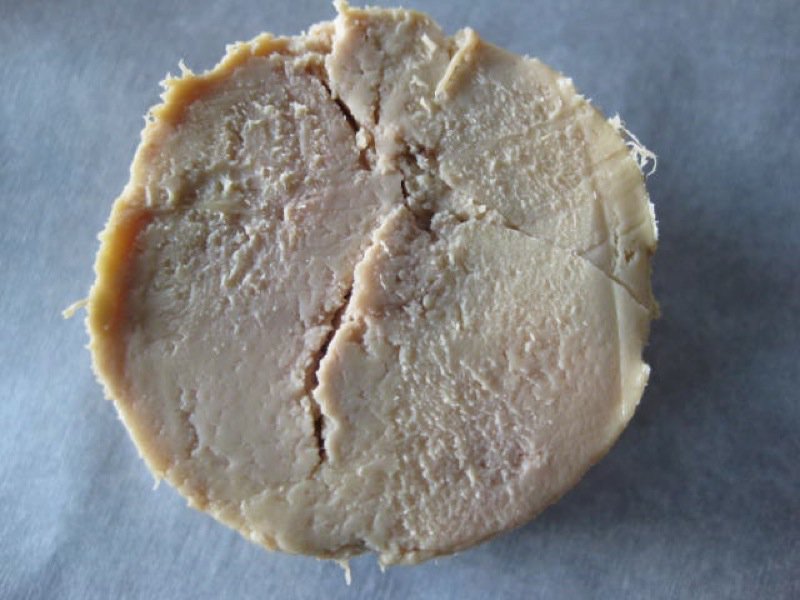
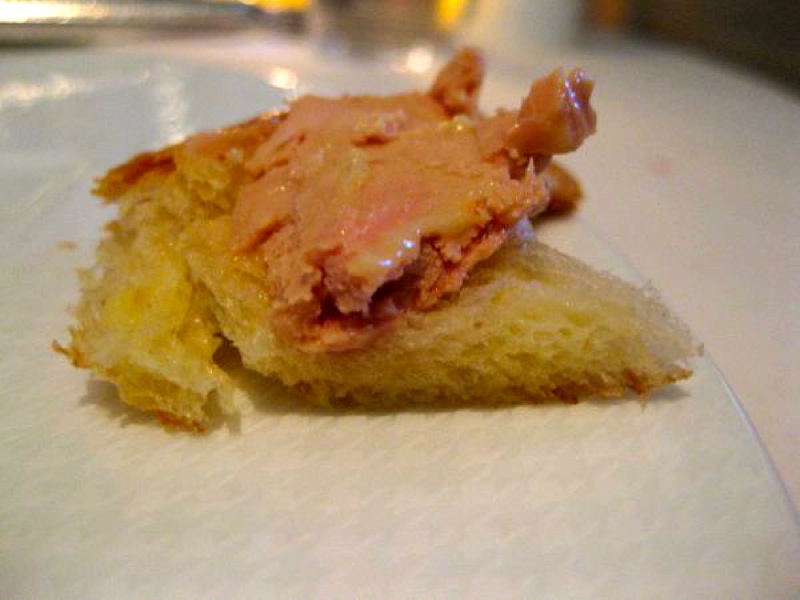
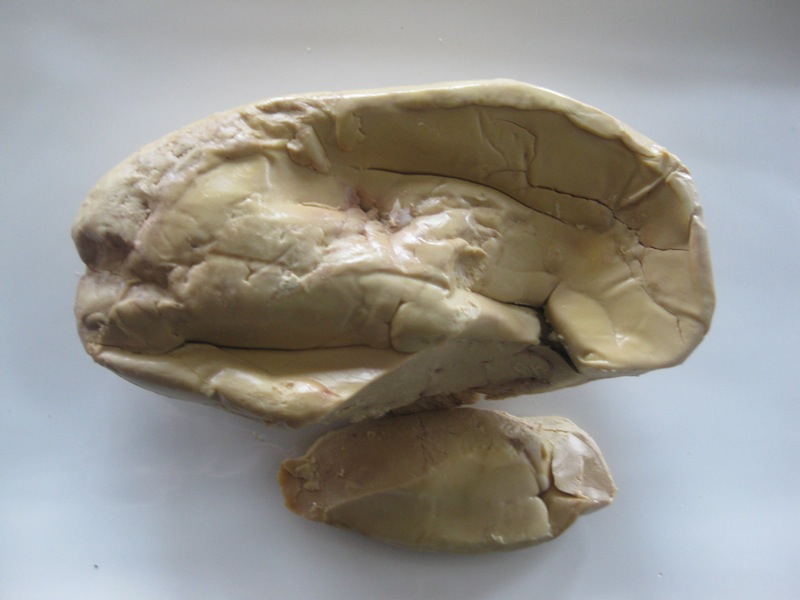
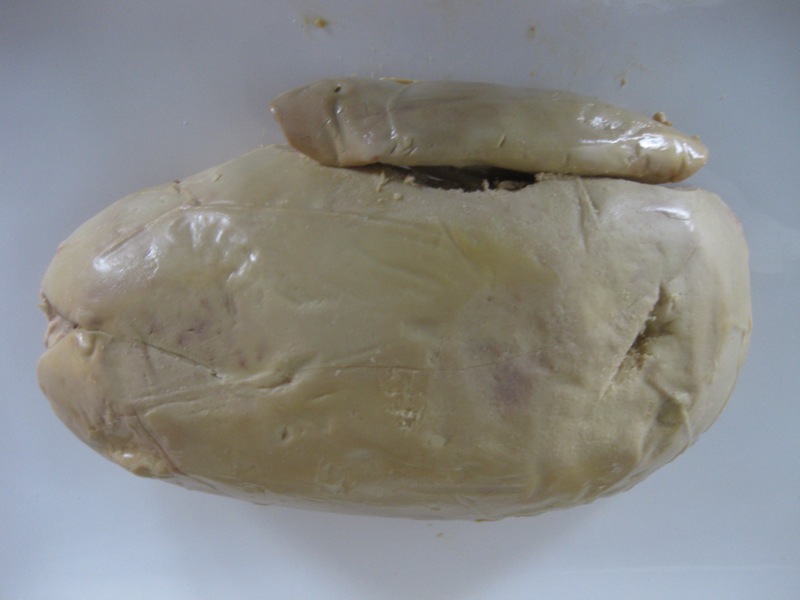
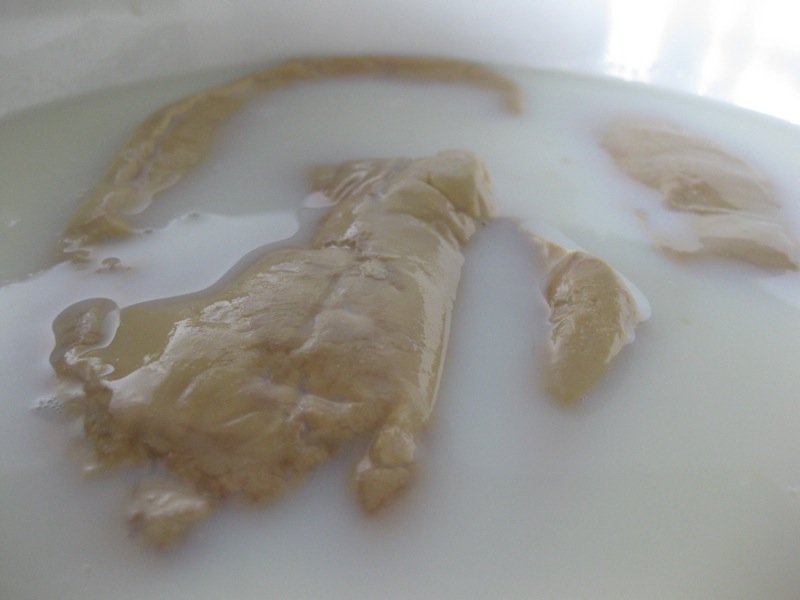
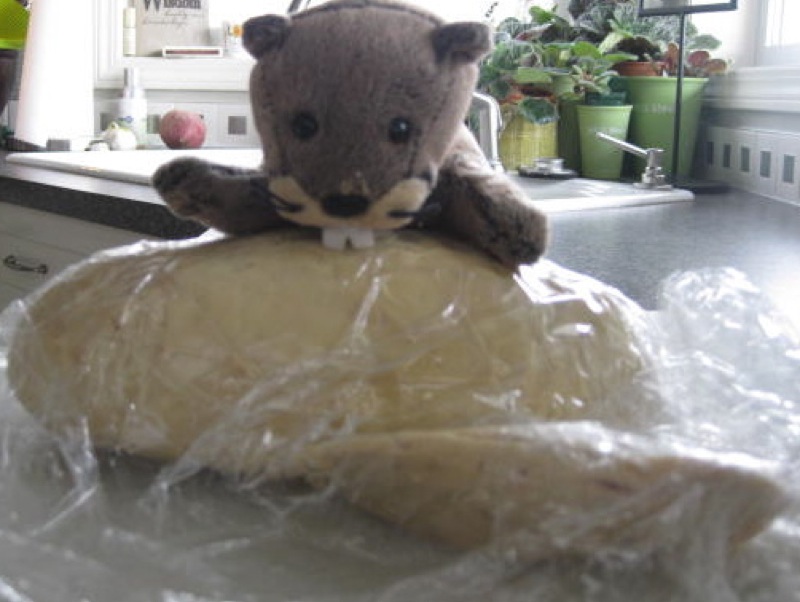

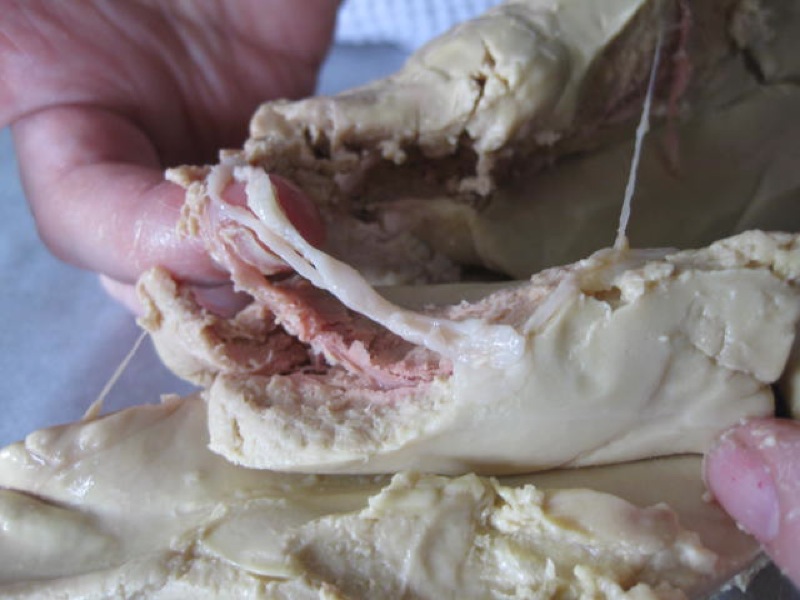


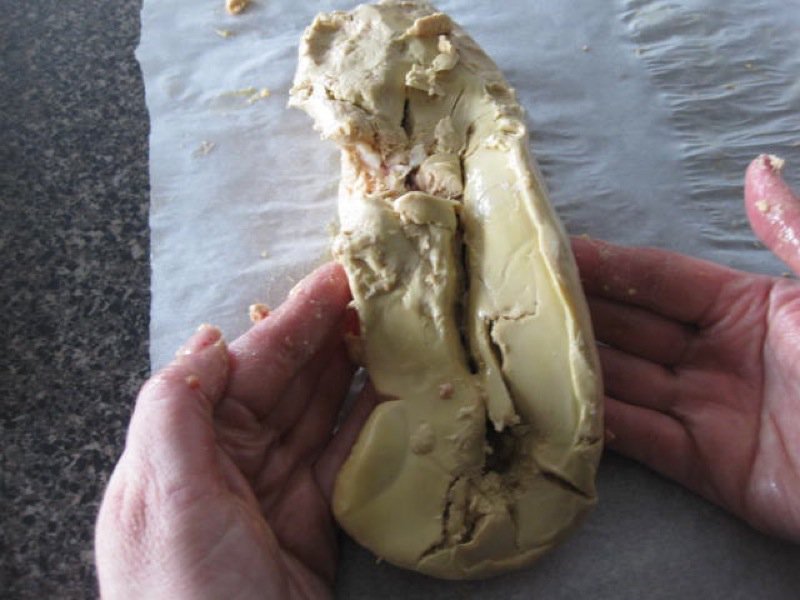

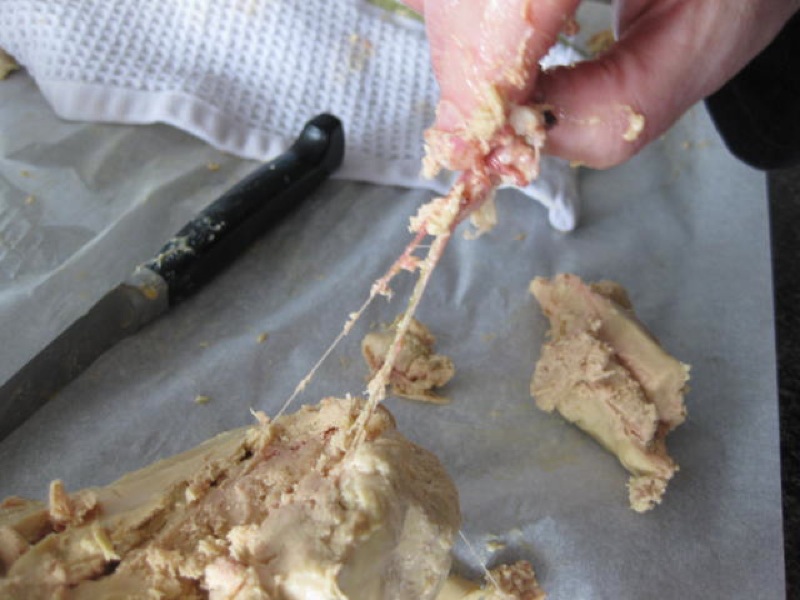
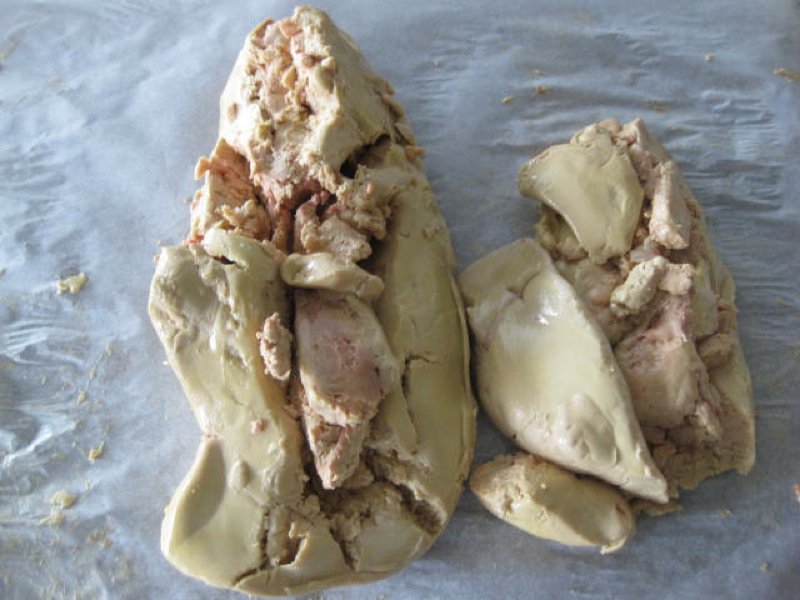
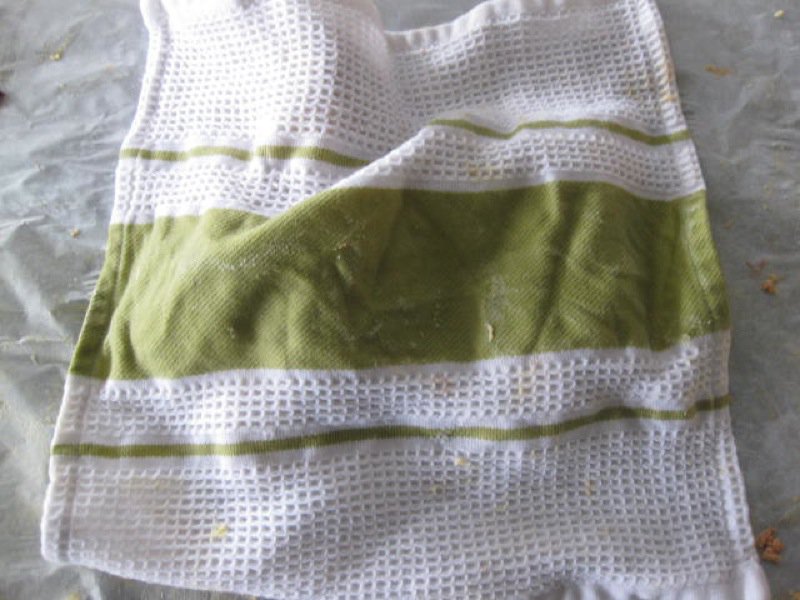
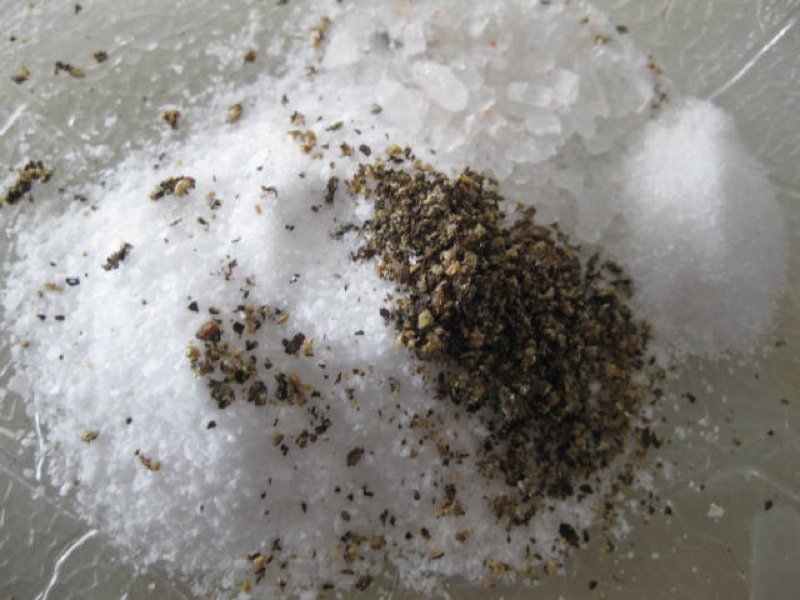
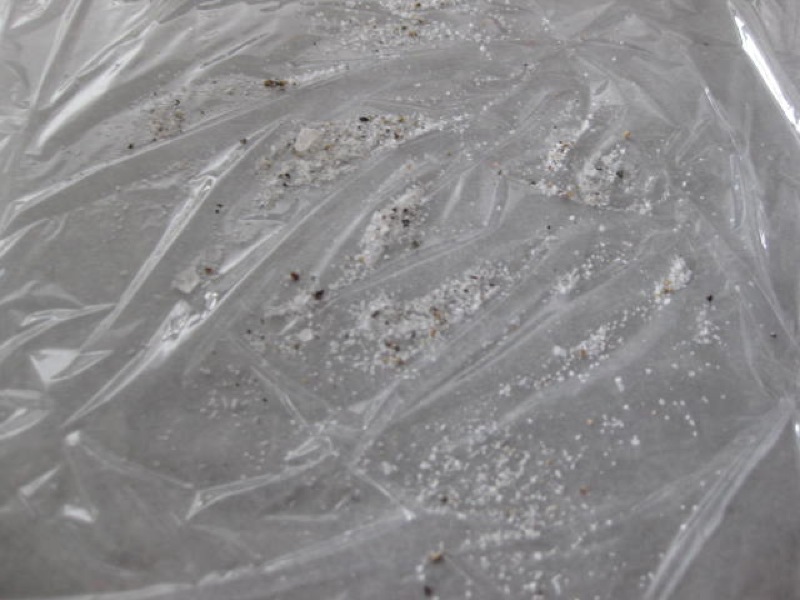
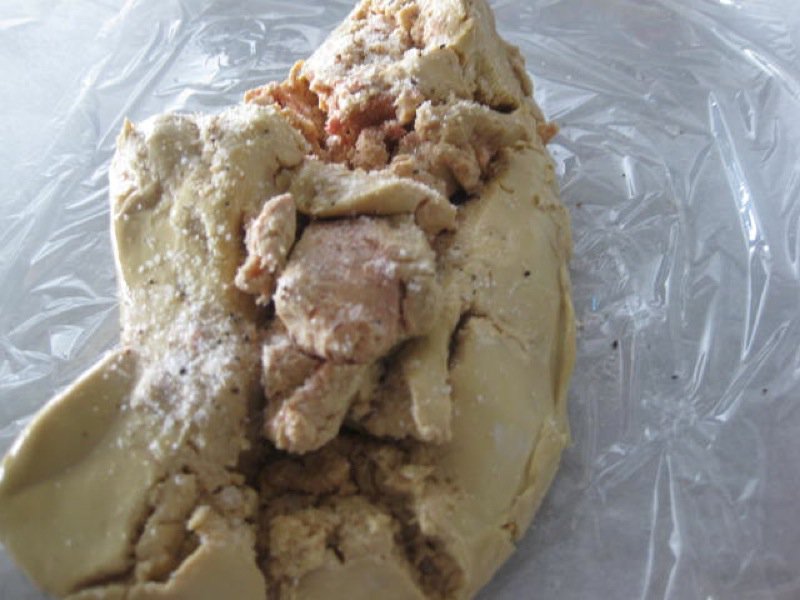
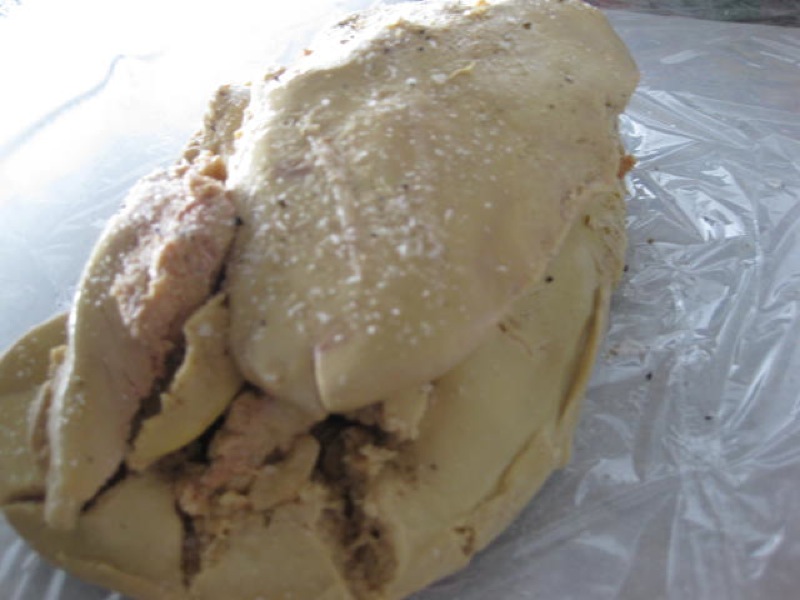
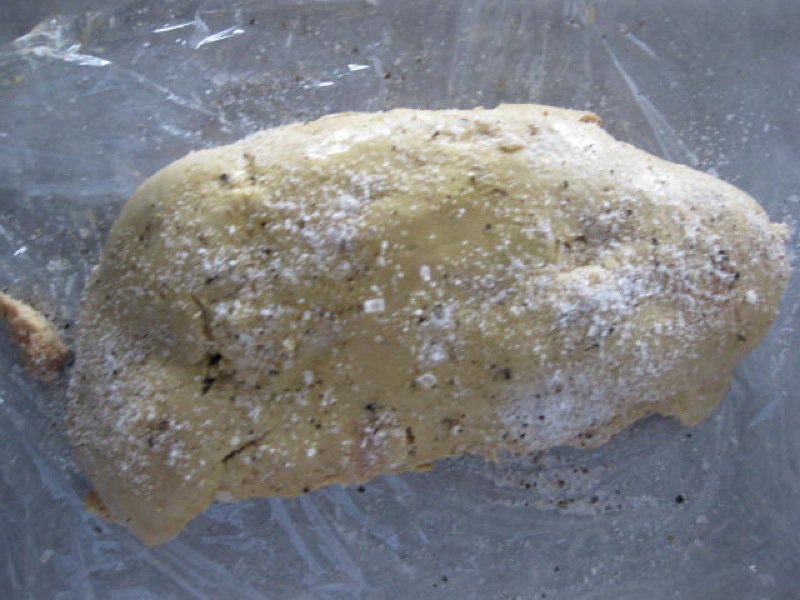
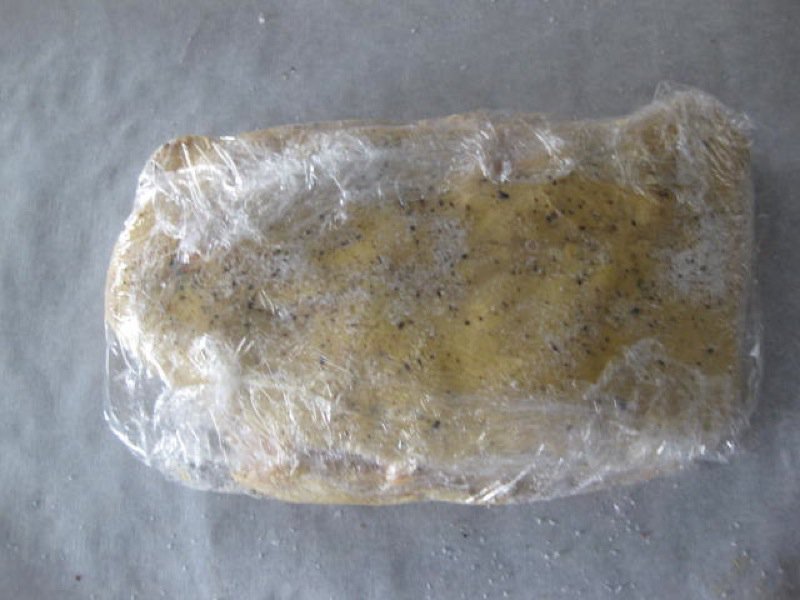
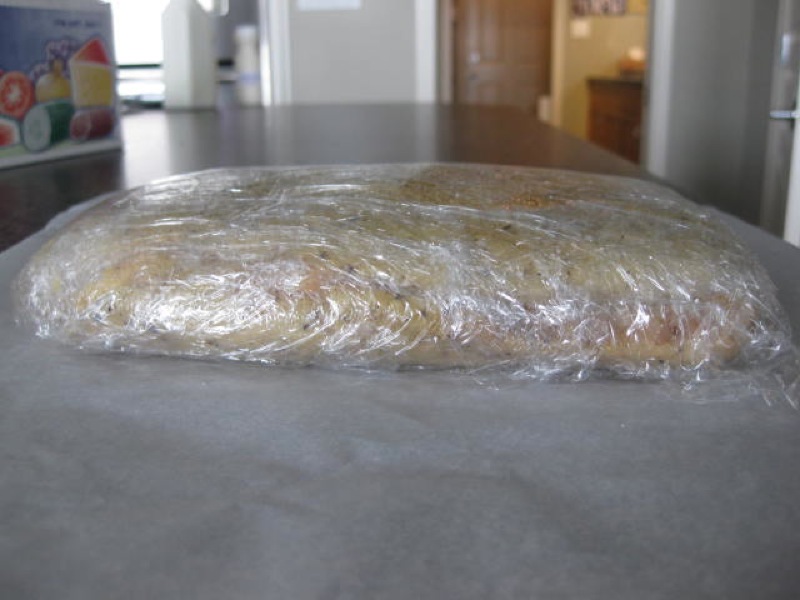
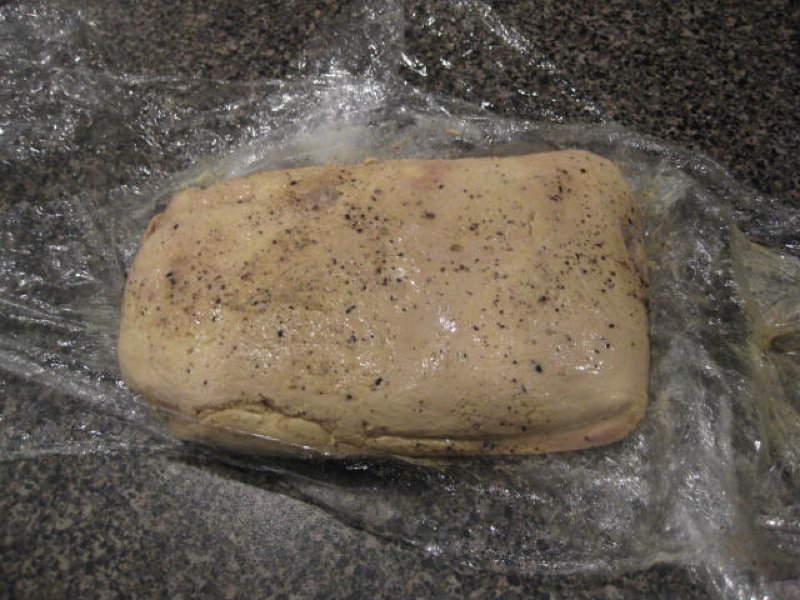
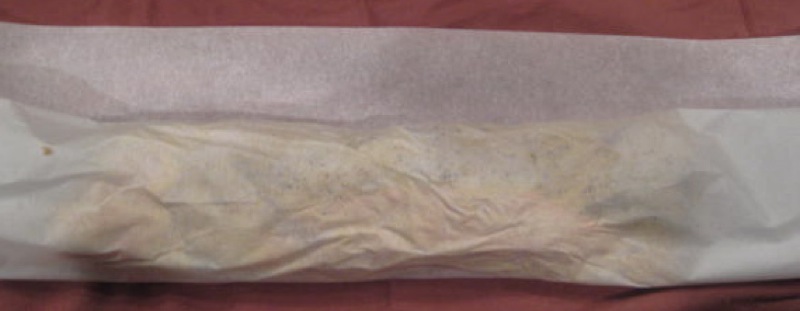
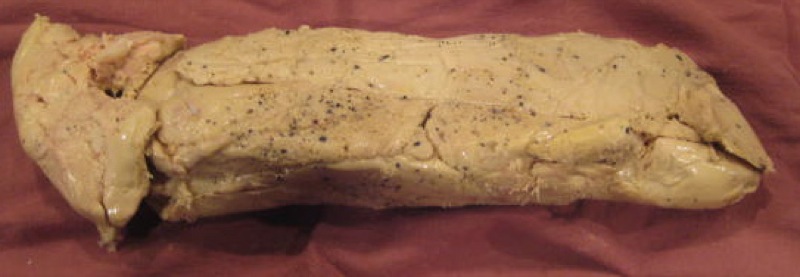
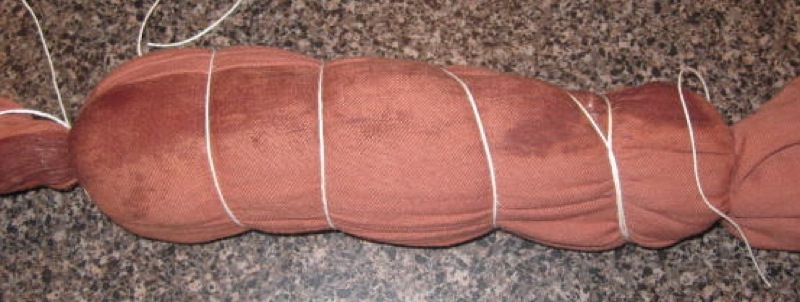
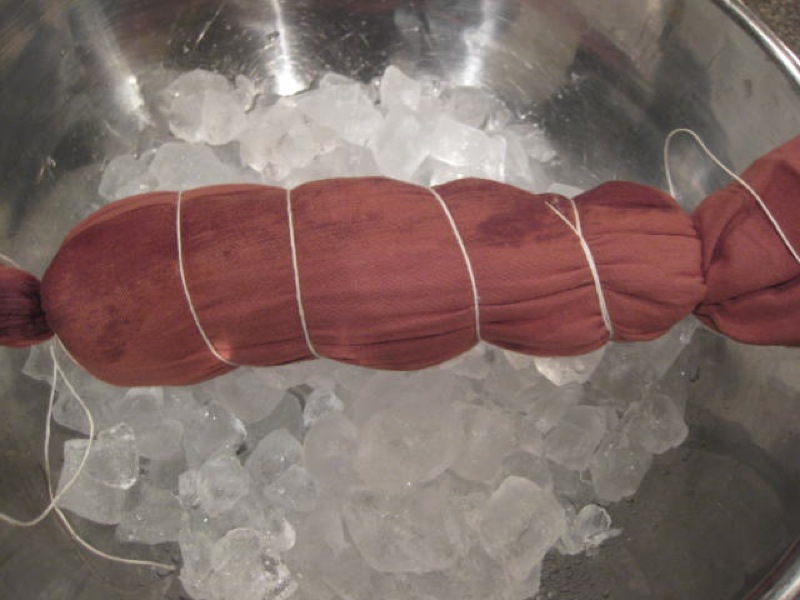
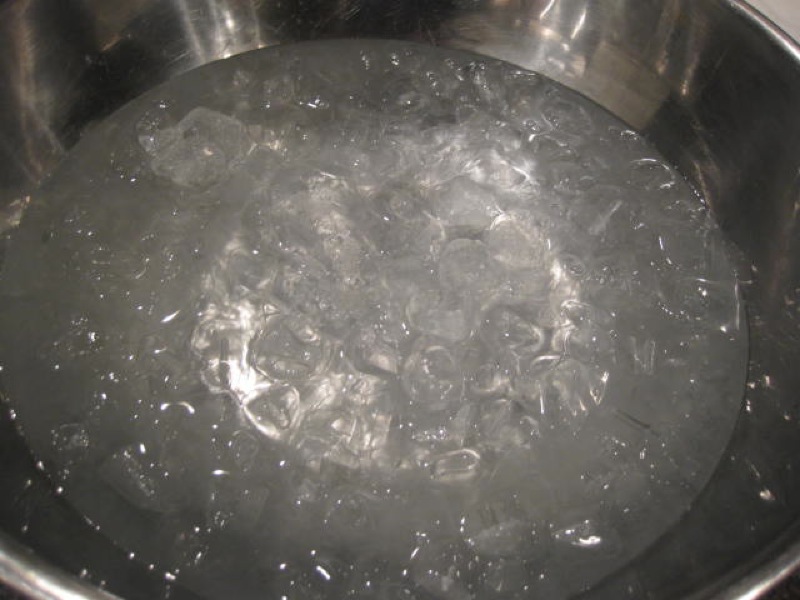
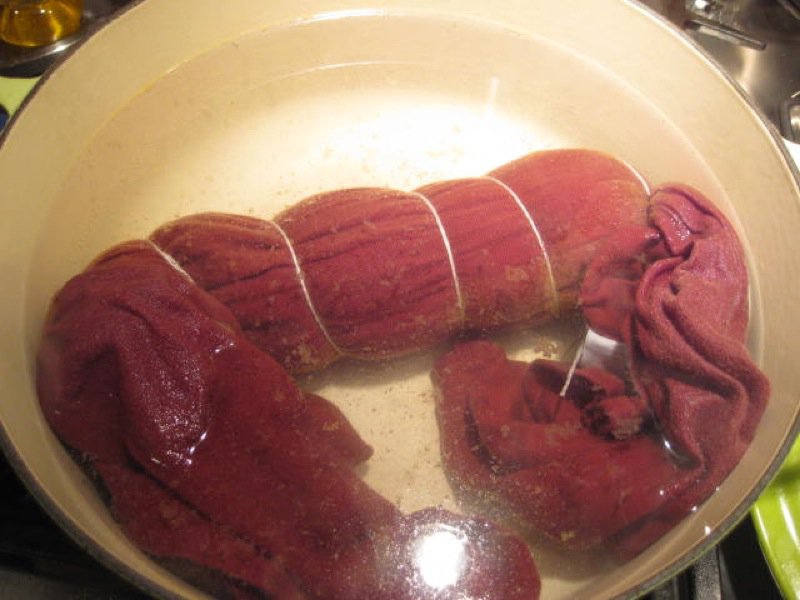
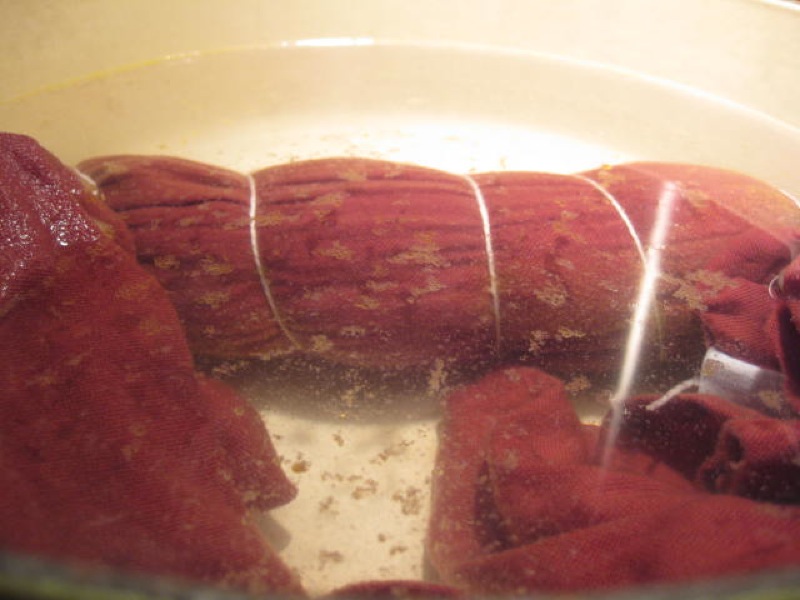
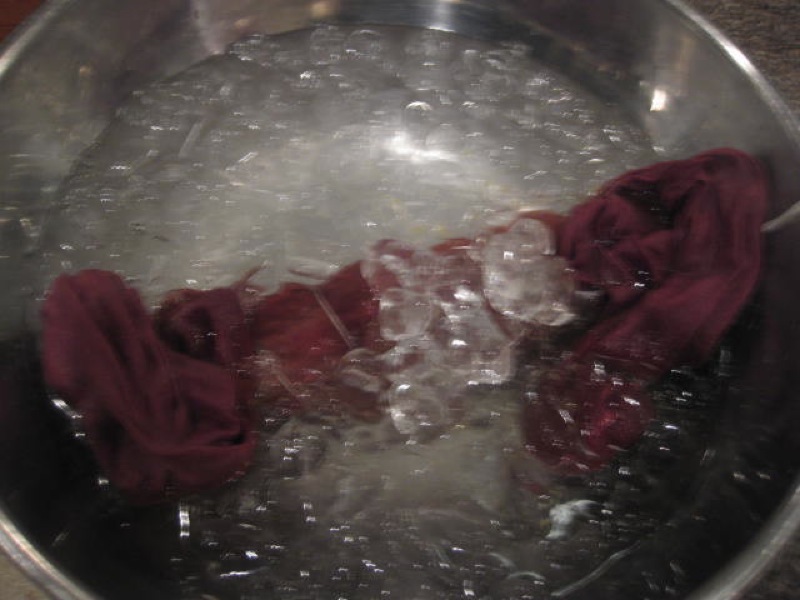
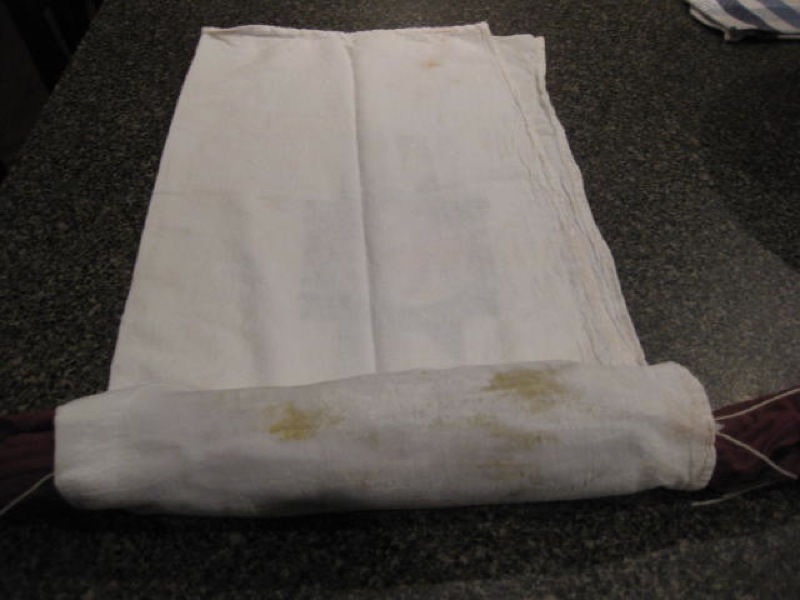
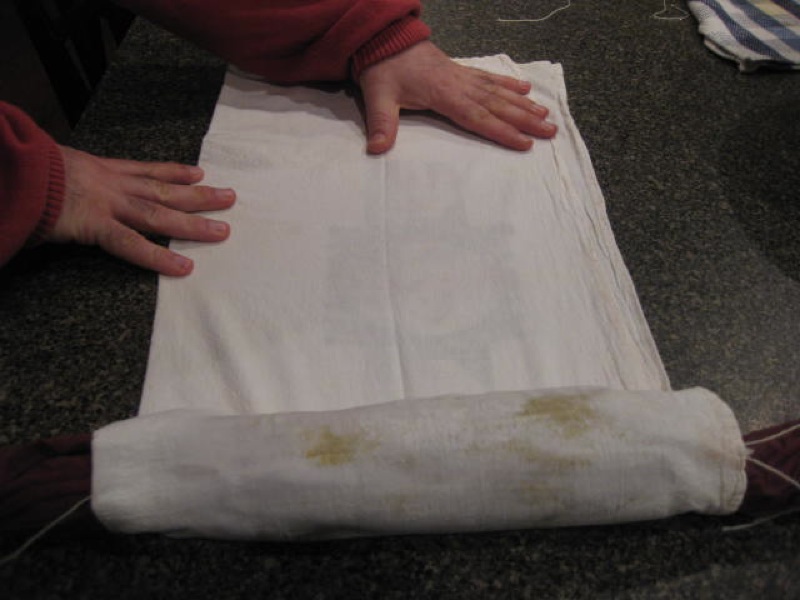
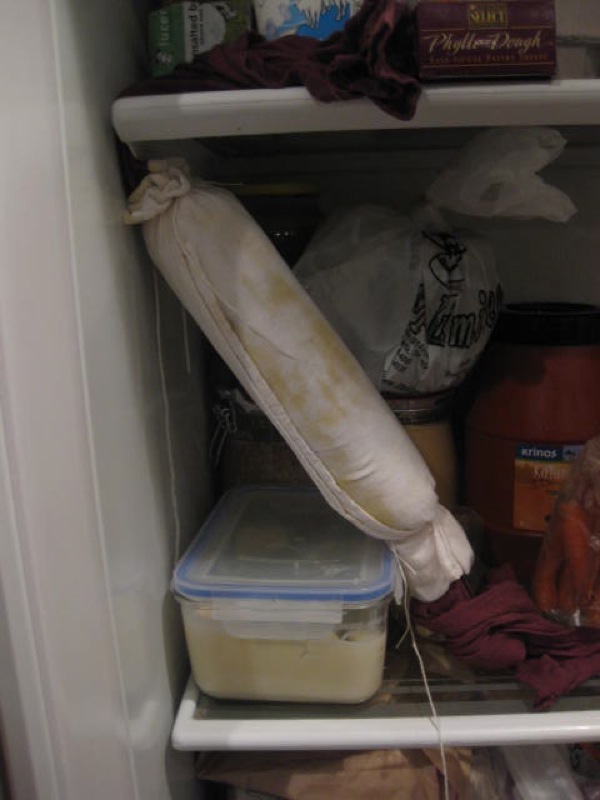

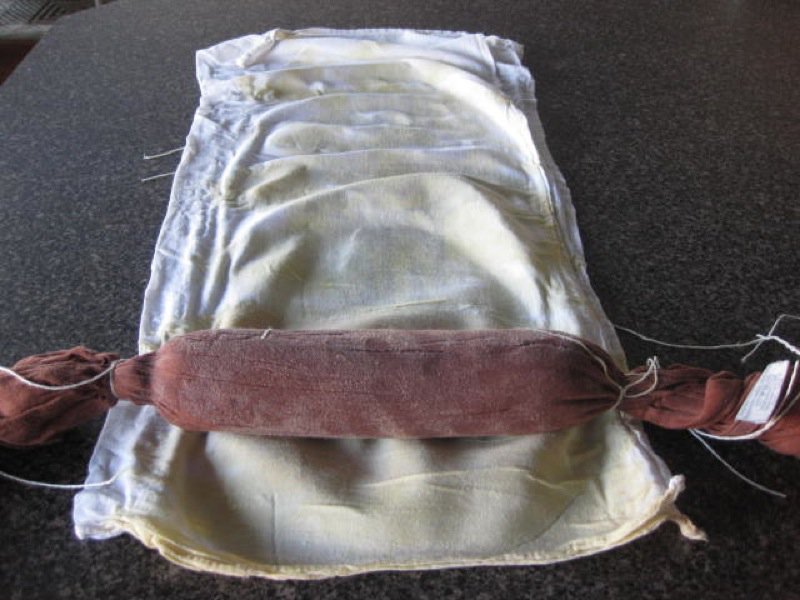
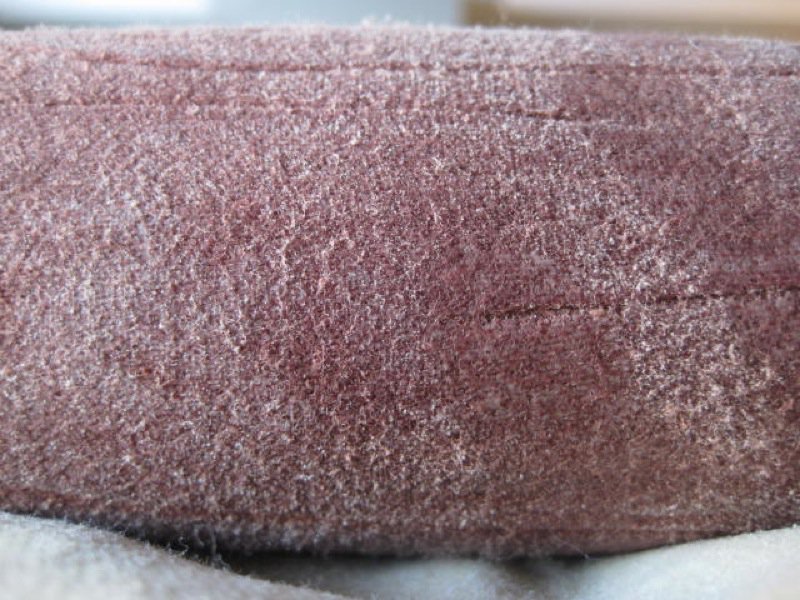
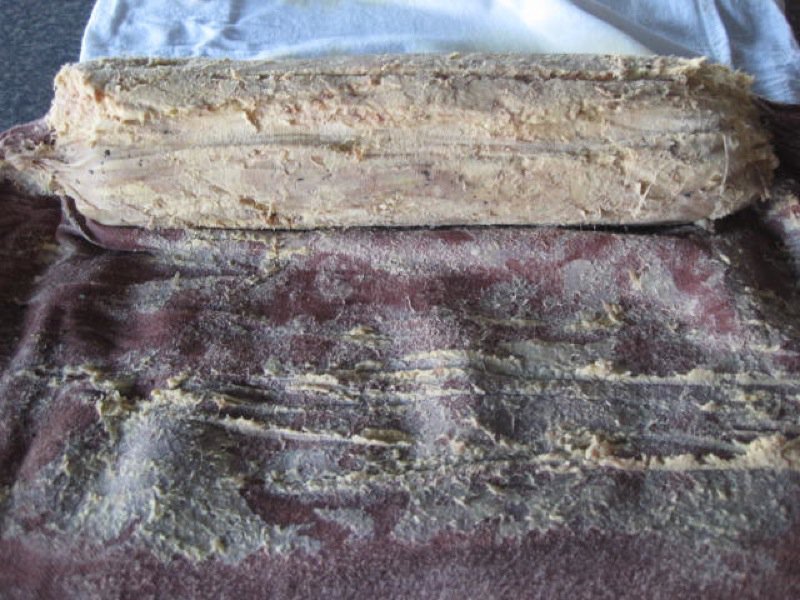
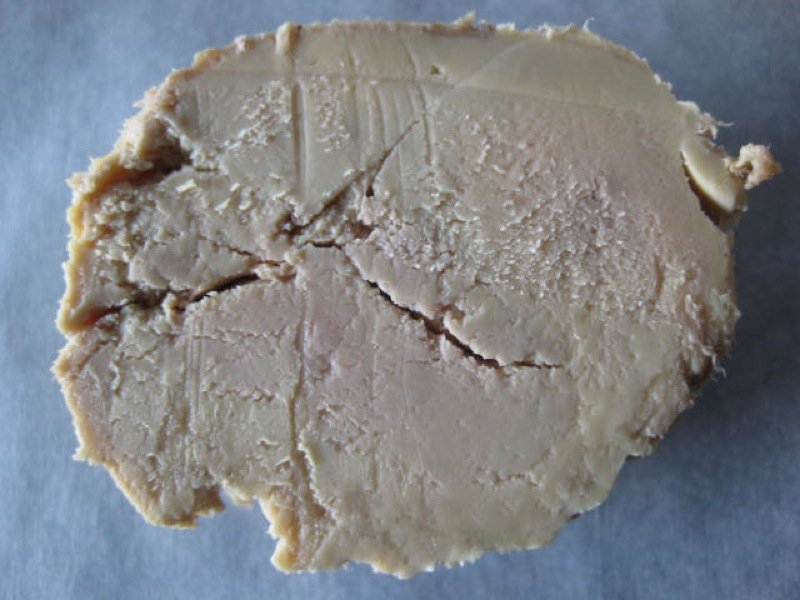
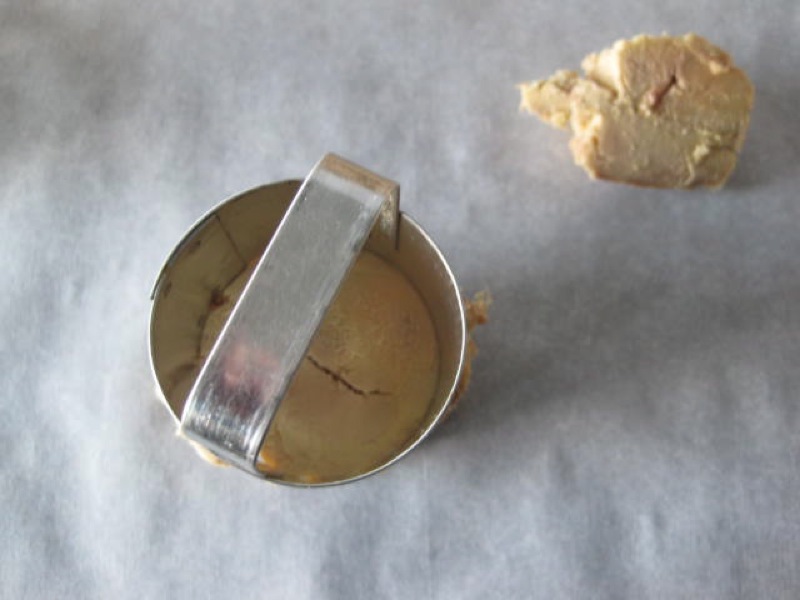

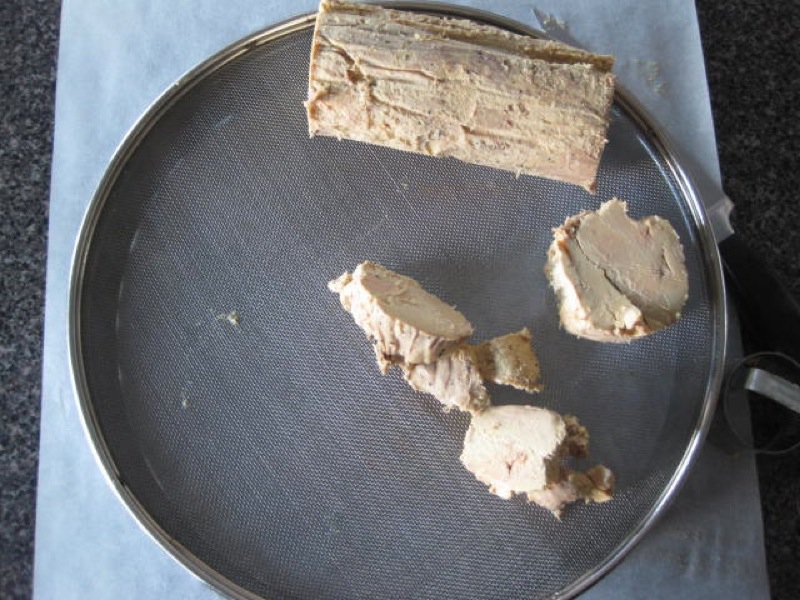

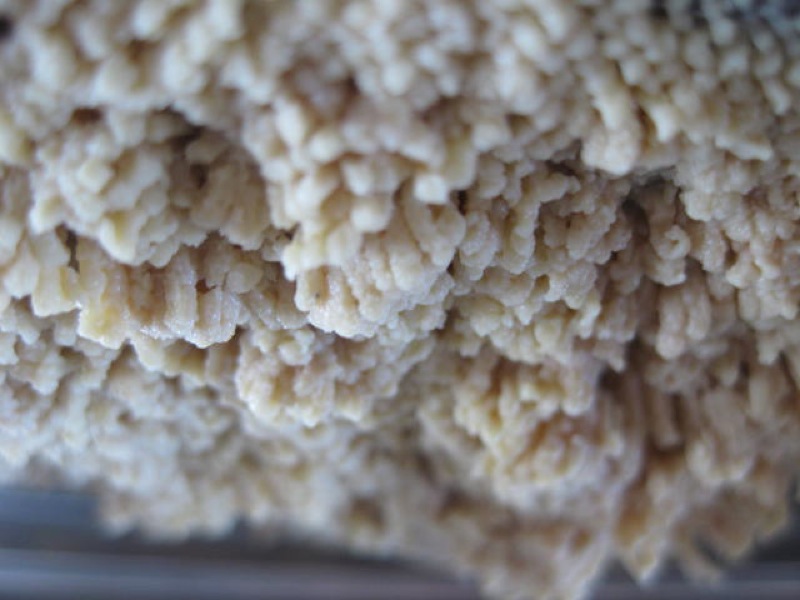
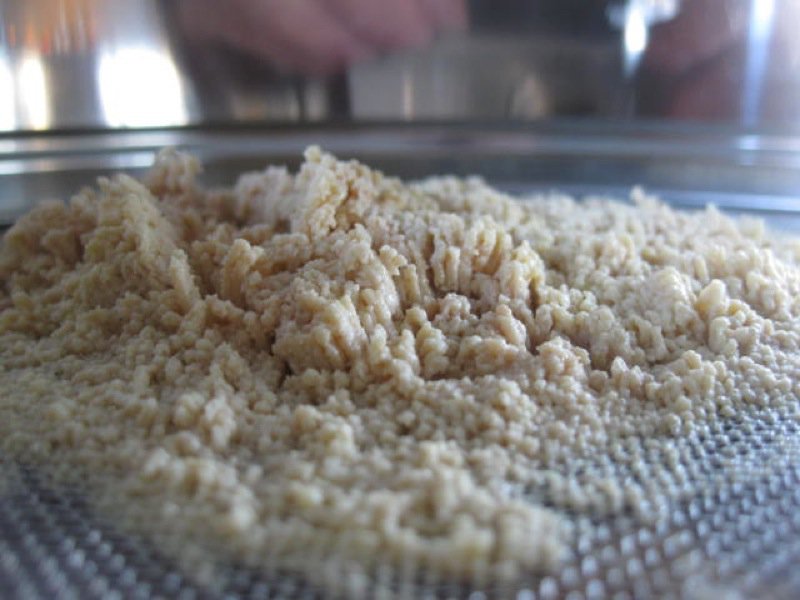
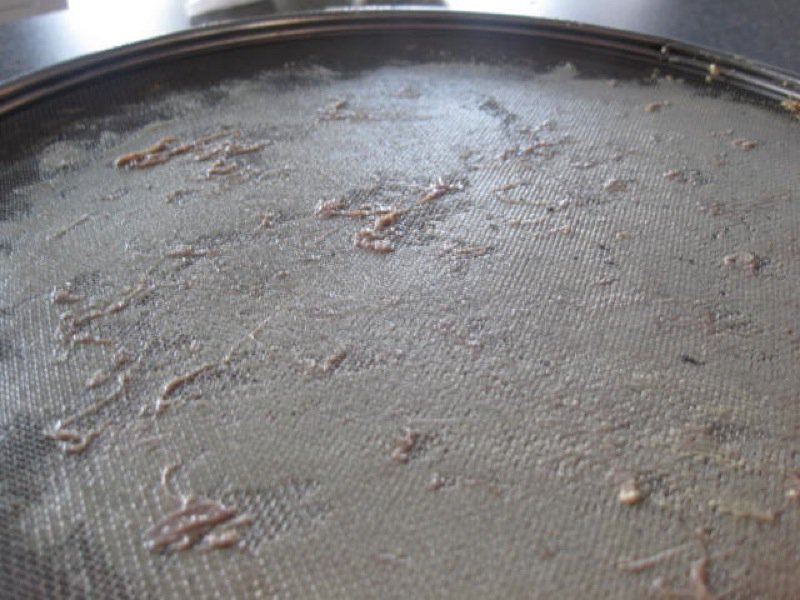
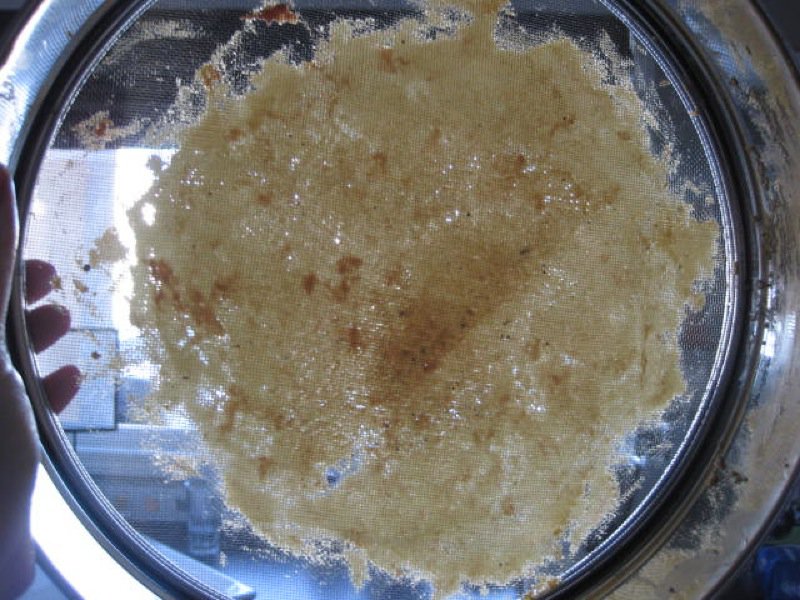


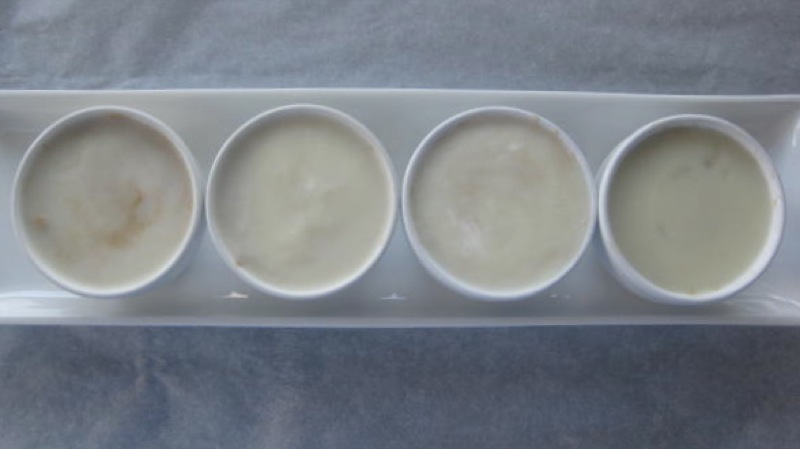
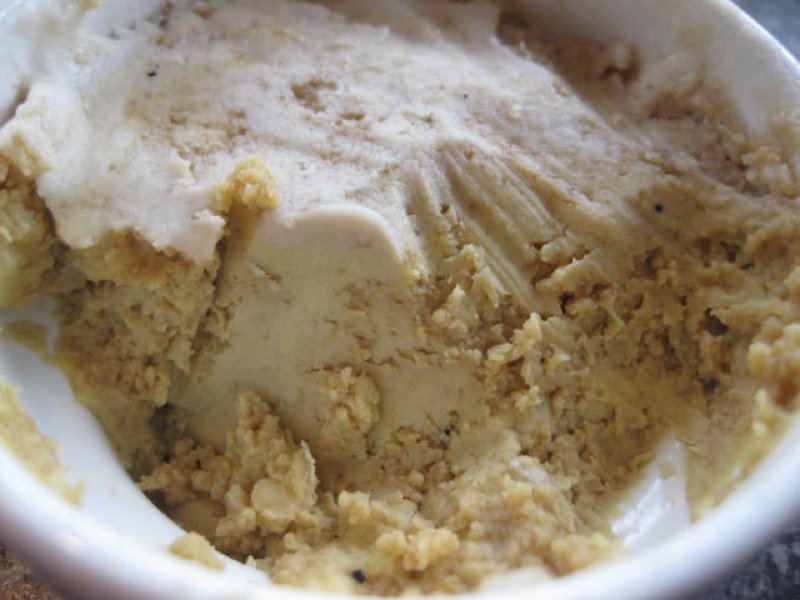
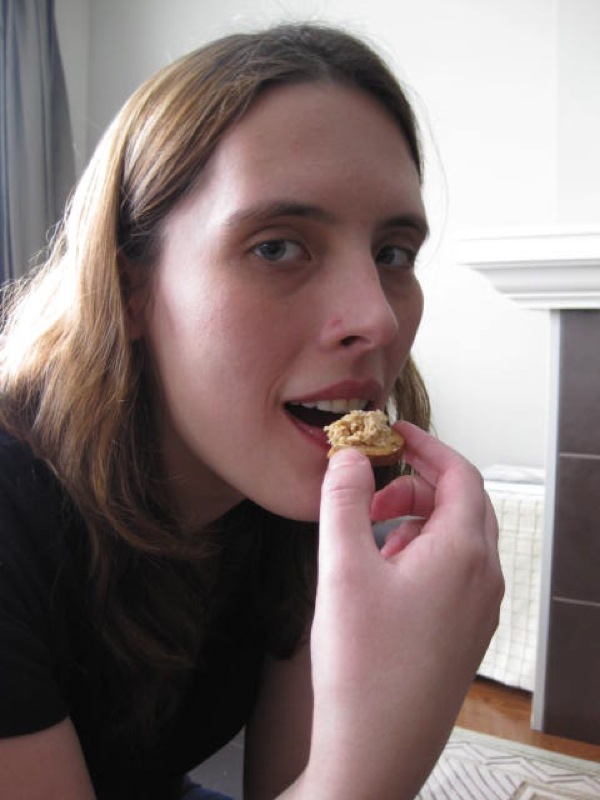
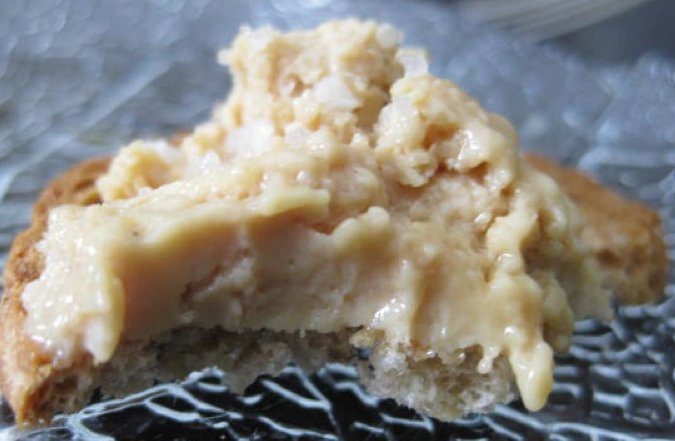

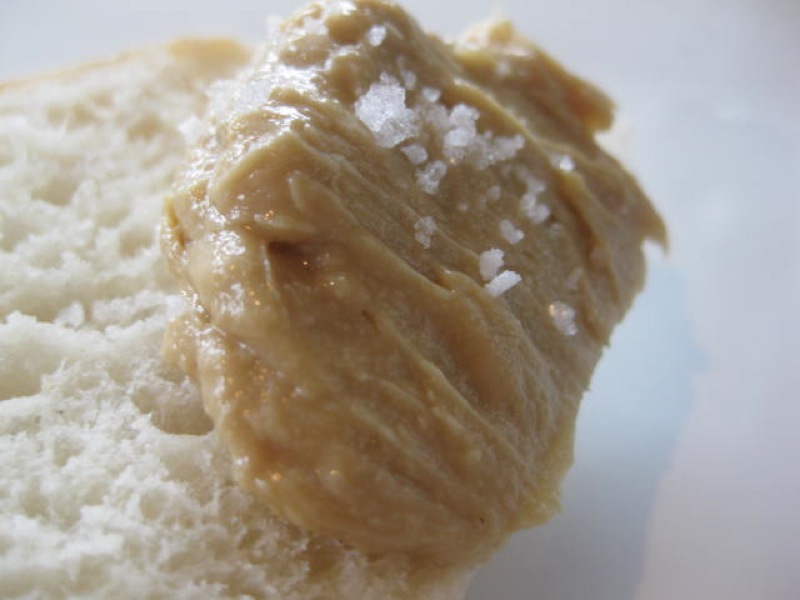
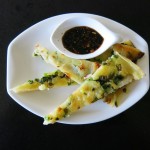
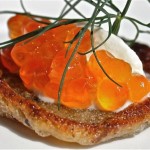
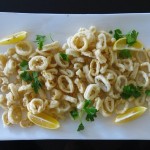
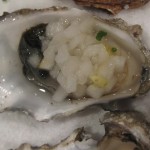
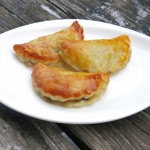
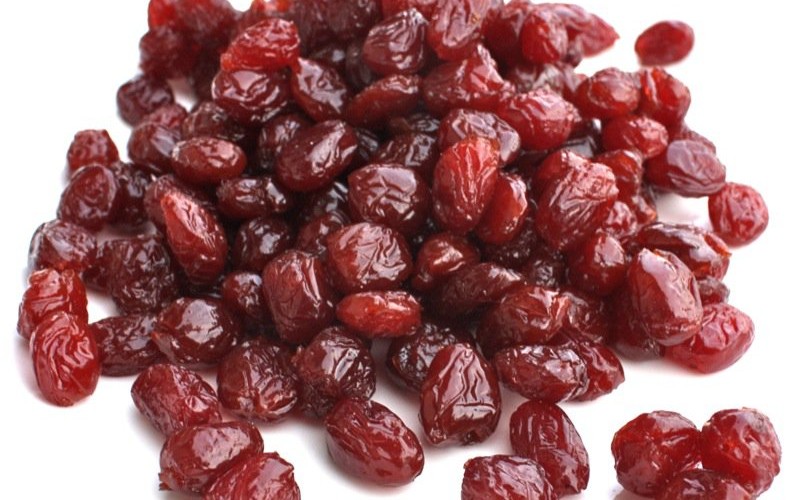





Holy cow, that looks like it took some serious time and “mad skillz” to pull off — I am sure it was amazing!!
That’s funny that you went to FL last August. Nicole and I were in Napa last August too, but couldn’t get a reservation (we called 59 days ahead instead of 60). We plan on going to the Napa region annually now, what a great place to chill for a few days…
What other restaurants did you hit while out there? We loved Bottega, and Bouchon, Mustards was so-so. We also hit Hubert Keller’s place in SF, that was pretty amazing too!
Andy
One of my daughters lives in Paola Alto – so we were there for 10 days of bliss. Highly recommend the FL… I have two posts on it… going to the Fat Duck and St. John in London in March – so I will keep you updated, there, too. 🙂 🙂 🙂
Didn’t get to Mustard’s. Too much to do the two days we were in the valley. Made Bouchon for coffee and the Bakery. YUM. Actually had a booking there, but got a sitting at TFL 2 weeks before for that same night. Loved, loved, loved Chez Panisse in Berkely (Alice Waters), and really enjoyed Zuni Cafe. I could spend a life time in the San Fran area and never get to all I want to get to there! All my write ups are here – under the recipes tab, in the restaurants category… if you are interested.
Can’t wait for the meatball throw-down!
Valerie, the pictures in this post were so helpful! I have the French Laundry cookbook and was afraid to try this recipe, but it looks much less intimidating after seeing this post!
I think Thomas Keller only photographed the “pretty” parts… but I really want to hear how the experience of others compares to mine! I would love to hear from you if you do this… and I will keep my ear to the ground via your site! 🙂
When you mentioned Bouchon I thought for sure you had been to the Okanagan where we have a fantastic restaurant by the same name. The next time you make this dish you will have to invite many of your new foodie friends…hint:D
Wow! What a journey to the finished product! I’m sure it was divine. I have the book too, but have not had the gumption to try it. The Fat Duck in March! You will be blown away. A friend of mine went for her birthday and shared some photos. I can’t wait for your post on that visit.
Thanks for posting such an in depth article preparing foie gras. I especially appreciated the pictures of the de-veining process. I have the French Laundry cookbook and agree that it only features pictures of the ‘pretty parts’ of the process. Every time I de-vein my foie gras, there is always a pile of crumbly bits that end up being mushed back into the lobes. It is very re-assuring to see that this is normal-just part of the process (well for us mere mortals…).
I have never tried making foie gras patépushing the foie gras through a tamis – as is done in the Bouchon cookbook (which I do not have). How did it compare to say, a traditional foie gras terrine where the foie is simple molded back together after de-veining? Was there a lot of wasted foie after pushing it through the tamis?
One last question – do you enjoy the Bouchon book as much as the French Laundry cookbook? I am thinking of getting it…..
Thanks again for a wonderful article and pictures.
I have eaten at The French Laundry which motivates me to use the cookbook. We didn’t get into Bouchon, but I bought the cookbook becasue I thought the food would be easier to prepare for, as you say, we mere mortals! I thought it would be fun to do both recipes, as it is clear to me that the left overs. or ends of the torchons served at TFL, get run down the street and made into pates for Bouchon. I, BY FAR, preferred the torchon. The pate was scrumptious, too. No doubt. But the texture of the torchon is more dense and “meaty”. I loved it. There, and at home. The only waste I had after pushing it though the tami was what I showed on the pan… a few veins and about a teaspoon of the foie gras. It is a great thing to do with the left overs from the torchon, should there be any, now that I know better.
I just got Ad Hoc at Home… and it is also excellent. I tend to read them more than cook from them, and I am trying to learn more by following the instructions to the “T” in each book where I see a recipe I really want to make – and believe is possible for me with my skill set. I still want to do the caviar and pearls… but need someone to assist – or to consult with, or to challenge me to a “cook off”. 🙂
Thank you for your questions. I would be thilled to hear any tips you have for me, as well.